9 min read
Trends in Home Design You Must Know
By: Camille Henderson w/ Spencer Powell on Dec. 13, 2024
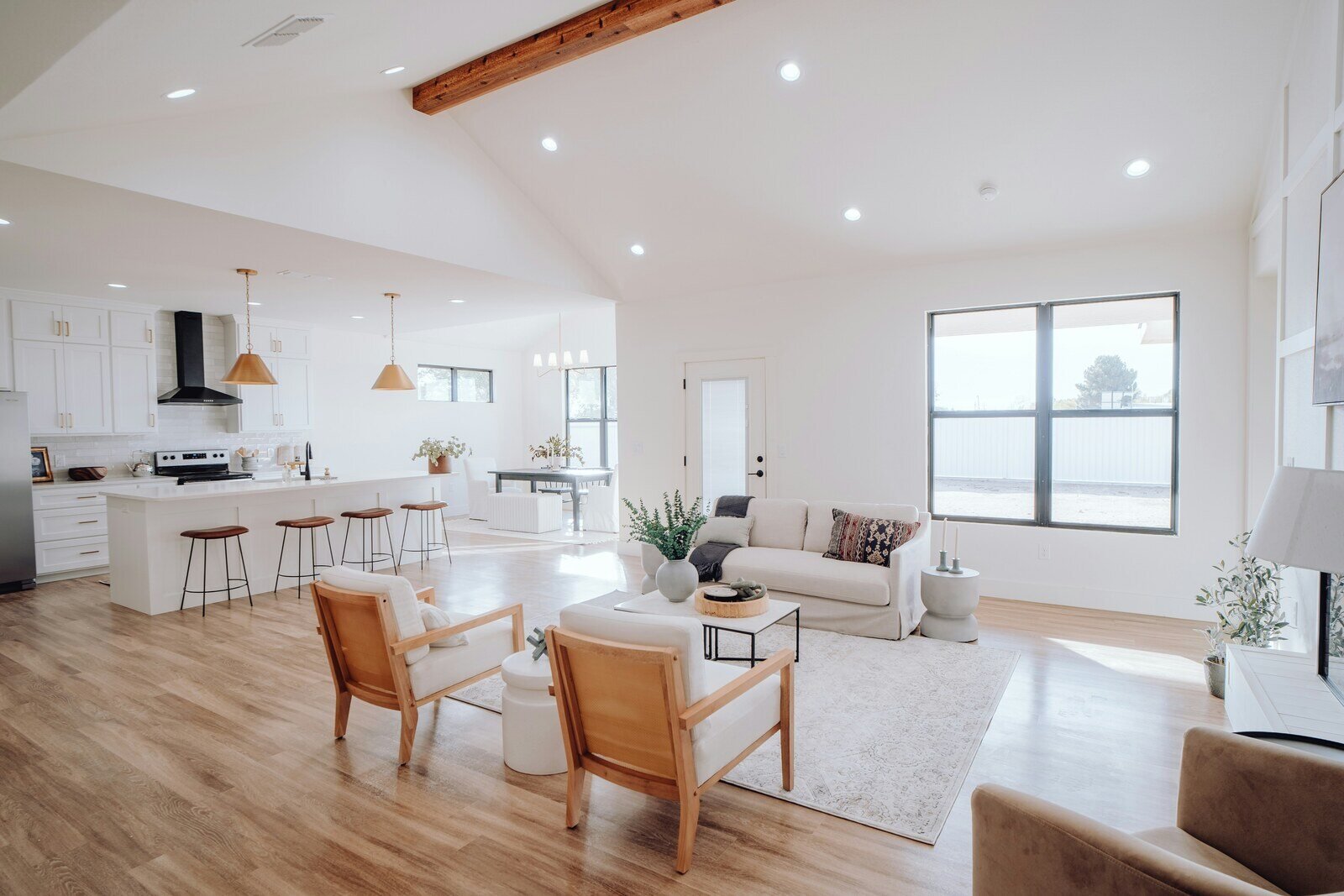
What's on the horizon for interior design this year? 2025 is shaping up to be the year homes stop pretending to be anything other than cozy, personal, and unapologetically stylish. We’re seeing a steady decline in cold, clinical interiors and the grays that overstayed their welcome. In comes a wave of warm colors, tactile materials, and spaces that offer up style-forward function. If the last few years taught us anything, it’s that our homes need to work harder and feel better while still looking good. It’s not too big an ask, right?
At Builder Funnel, we’re fortunate to count top in-house designers among our clients across the country. This gives us a unique view of what’s happening on a regional level and what’s trending nationally. Some of these trends will feel like a breath of fresh air (literally, when it comes to indoor-outdoor spaces), while others bring a sense of timeless comfort. Here’s everything you need to know about the colors, textures, and features defining modern interior design in 2025.
Home Design Trends to Watch for 2025
The Colors of 2025: Nature Gets Sophisticated
If you’re ready to say goodbye to stark grays and sterile whites, you’re in luck. The color palettes for 2025 feel warm, grounded, and, most importantly, livable. This year’s trends move closer to nature but with an added layer of sophistication. Earthy tones like terracotta, rich browns, and muted greens are taking center stage alongside more refined jewel hues like deep plum and clay-infused reds.
- Mocha Mousse (Pantone): A soft, grounding brown that works beautifully on walls or as an accent.
- Cinnamon Slate (Benjamin Moore): A rich, brownish plum that feels both bold and timeless.
- Mapped Blue (Dutch Boy): A subtle, versatile, calming blue-gray.
- Caramelized (Dunn-Edwards): Terracotta brown that brings warmth without overwhelming a room.
- Purple Basil (Glidden): Jewel-toned purple with a violet undertone—perfect for adding drama.
- Bosc Pear (Sherwin-Williams): Nature-inspired green with enough complexity to feel fresh, not flat.
Trend Spotlight: Color Drenching
One of the biggest movements in home design this year is color drenching. Rather than using bold hues sparingly, designers are fully committing. Walls, ceilings, trim, and even furniture painted in the same rich shade create a layered, cocoon-like effect. The result feels immersive and cohesive without tipping into chaos.
Indulge us and imagine a dining room washed in a deep, moody plum like Purple Basil, with matching trim and crown molding. Or a living room bathed in terracotta tones down to the ceiling. It’s bold but not busy, creating a sense of calm elegance.
Complex Neutrals: The New Backbone of Design
If you’re worried all these rich hues might be too much, don’t be. The other side of the 2025 palette focuses on complex neutrals. These aren’t the harsh whites or cool grays of the past. Instead, think soft browns with peach undertones (like Mochi by Little Greene) or muted beiges that still feel warm and welcoming. Colors like Malabar (Sherwin-Williams) and Mocha Mousse strike the perfect balance: neutral but not bland.
Textures, Textures, and More Textures
If 2025 had a mantra, it would probably be: Don’t just look at it, touch it. Texture is stepping up as one of the most defining elements of interior design this year. As homes lean further into warmth and livability, tactile details take center stage. Smooth, flat surfaces give way to materials that beg to be felt, from reeded cabinet fronts to cozy fabrics.
Textural Cabinetry and Furniture
The kitchen and living room, two of the busiest spaces in any home, benefit most from the texture trend. Flat, glossy cabinet doors are increasingly replaced with reeded, rattan, mesh, and woven-front cabinetry. These artisanal touches add instant depth and interest without pretentious effort.
Designers embrace layered materials like linen, velvet, leather, and natural wood finishes in furniture. Think plush velvet chairs against a rough-hewn oak table or a linen-upholstered sofa paired with woven rattan accents. The contrast between materials creates warmth while maintaining a polished look.
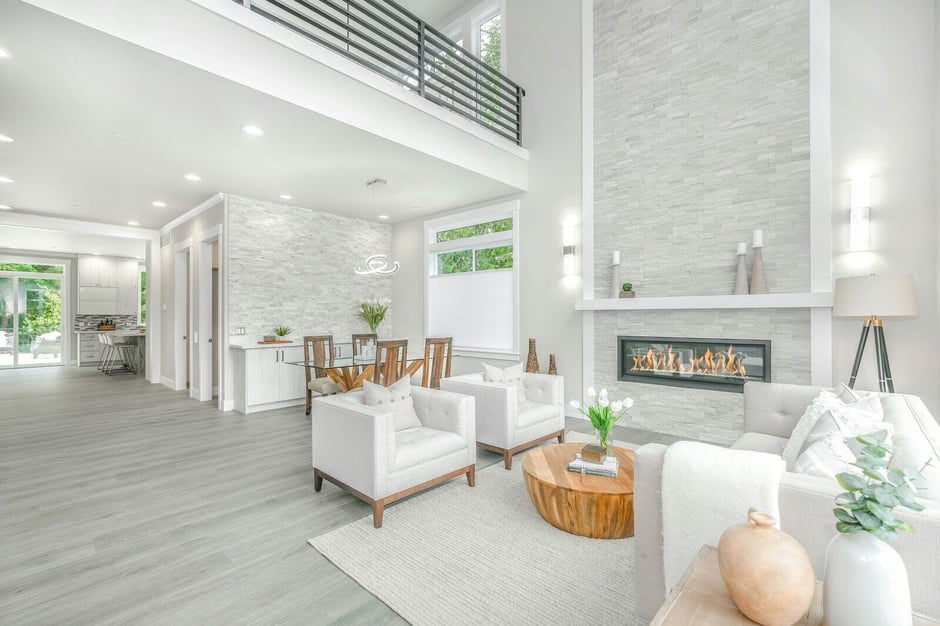
Natural Materials Add Organic Warmth
Textures in 2025 are also a celebration of nature. Expect more reclaimed wood, natural stone, and handmade tiles to replace their overly polished counterparts. With their raw and imperfect beauty, unpolished marble and travertine are particularly popular in kitchens and bathrooms.
For example, a kitchen island made of reclaimed wood topped with an unpolished marble slab feels both timeless and completely current. Handmade tiles, with their slight variations in color and texture, are also finding their way into backsplashes, floors, and fireplace surrounds.
Ceilings: The Fifth Wall
For far too long, ceilings have been treated as an afterthought. We’ve got a blank space, and it’s high time we wrote something bold there that would make Tswift proud. Ceilings are finally getting the attention they deserve, emerging as one of the most exciting ways to make a statement.
Painted Ceilings for a Bold Impact
The easiest way to embrace this trend is with paint. Instead of sticking to classic white, designers are bringing color up to the ceiling, and the results are stunning. Peruse the colors of the year for of-the-moment inspiration for the perfect hue. Painted ceilings work beautifully in smaller spaces like powder rooms or home offices, where bold design choices feel less risky.
Architectural Details: Beams, Woodwork, and More
Beyond paint, ceilings are seeing an influx of architectural detail. Exposed beams like rustic reclaimed wood or clean, modern versions add character and dimension to any room. Wood paneling, coffered ceilings, and even shiplap are making their way overhead, taking visual interest to new heights.
If you want something a little more unexpected, wallpaper and fabric are also making waves on ceilings. Try a subtle patterned wallpaper in a dining room or a soft fabric treatment in a bedroom to add depth and luxury.
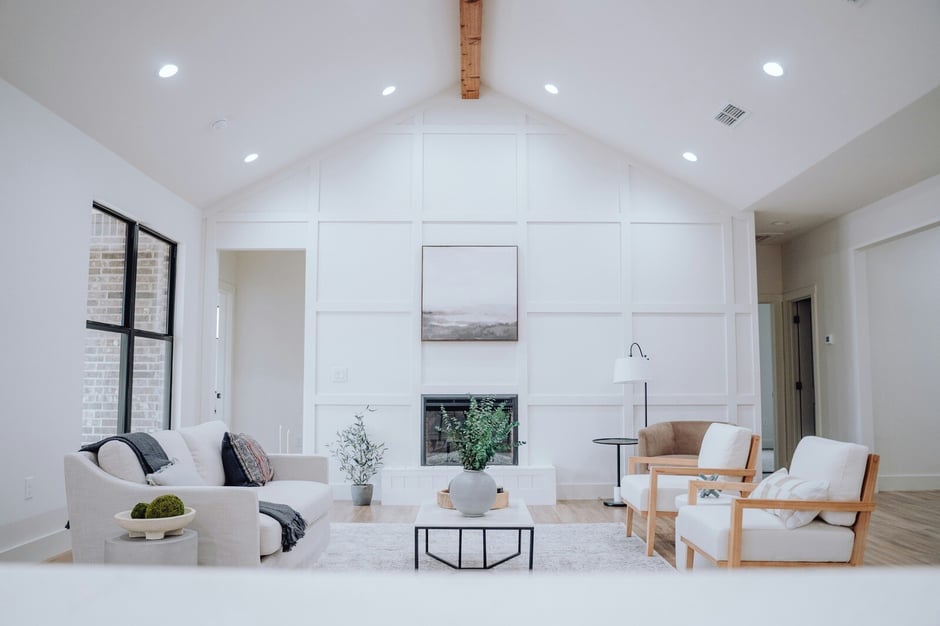
Curves and Arches: The Softened Edge
Curves and arches are emerging as one of the most popular trends, adding a romantic, organic feel to homes. This shift towards rounded forms is all about balance, softening the clean lines of modern design without compromising sophistication.
Arches in Architecture
Arches are increasingly appearing in doorways, windows, and built-ins, creating a timeless, elegant look. An arched doorway leading into a kitchen or dining room feels effortlessly graceful, while arched windows bring in natural light with added character. Built-in shelves and nooks are also embracing rounded shapes. An arched built-in with layered decor feels softer and more intentional than the boxy shelving of the past.
Curved Furniture and Decor
Curved silhouettes add a sense of comfort and movement to furniture. Sofas with rounded backs, circular coffee tables, and chairs with soft edges are replacing angular, rigid pieces. The result is a look that feels more inviting and relaxed. Rounded shapes are also trending decor elements like mirrors, light fixtures, and wall art.
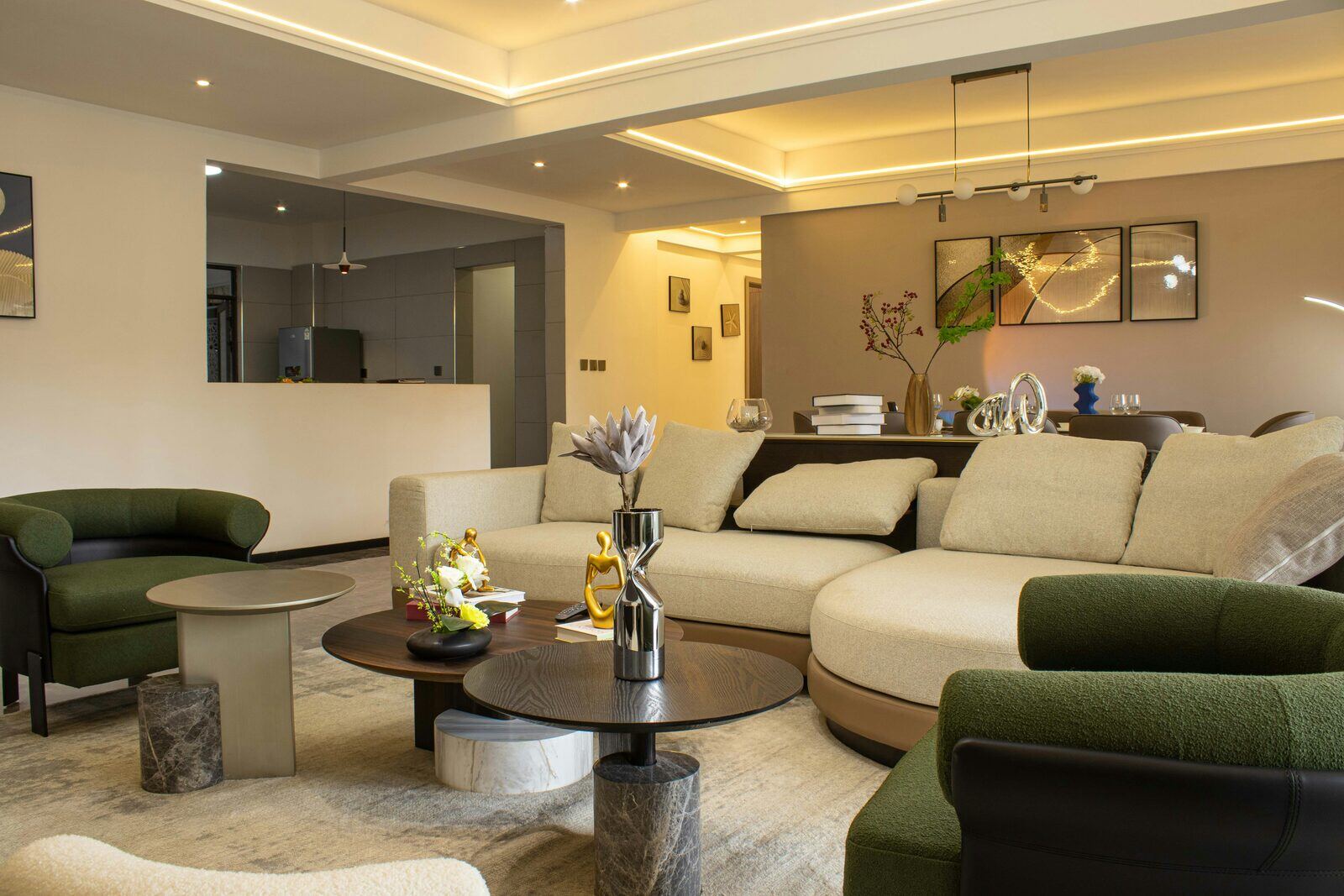
Lighting as Art: Sculptural and Layered
Lighting has always been functional, but in 2025, it is taking on a new role as art. Instead of fading into the background, light fixtures become bold, sculptural focal points that demand their own spotlight.
Sculptural Fixtures Add Style
Sculptural chandeliers, asymmetrical pendant lights, and artistic sconces are on the upswing, adding personality and visual interest. Fixtures made from metal, glass, and natural materials like woven rattan or stone fit seamlessly into every aesthetic.
Layered Lighting for Mood and Functionality
Designers are layering different types of light, ambient, task, and accent to create spaces that adapt to changing needs and moods. For example, recessed lighting provides soft background illumination, while a statement floor lamp adds focused light for reading or work. Accent lighting, such as wall sconces or LED strips, highlights architectural features and artwork. This approach creates rooms that feel intentional and balanced and gives homeowners more control over the look and feel of their spaces throughout the day or season. Smart lighting options that allow for dimming and color changes are helping bring this trend to life with ultra-customizable options in every moment.
Blurring the Line Between Indoors and Outdoors
The connection between indoor and outdoor spaces has been growing for years, but in 2025, it reaches a new level, bringing in fresh air, natural light, and a sense of balance into daily life.
Retractable Walls and Glass Doors
One of the clearest ways homeowners connect indoor and outdoor spaces is through retractable walls and large glass doors. Sliding panels and folding glass walls make opening a space to the outdoors easy. A living room that flows into a patio or a kitchen that opens up to a deck makes the home feel larger and more integrated with nature. These designs work particularly well in regions with mild climates, but even in cooler areas, homeowners choose insulated glass options to bring the outdoors in without sacrificing comfort.
Natural Ventilation and Outdoor Living Spaces
Outdoor living spaces are becoming an extension of the home. Patios, porches, and decks are being designed with the same care as interiors, featuring comfortable furniture, layered lighting, and natural materials. Retractable screens, pergolas, and covered outdoor rooms allow these spaces to feel usable year-round. Natural ventilation is also a key part of this trend. Large windows, operable skylights, and strategically placed doors improve airflow, creating harmony inside and out.
Bringing Nature Indoors
Your brain loves biophilic design. Many bathrooms, kitchens, and other remodeling and new construction designs are bringing natural elements inside using raw materials like stone, wood, and clay. Potted plants, green walls, and fresh flowers also add life and a pop of color to interiors this year.
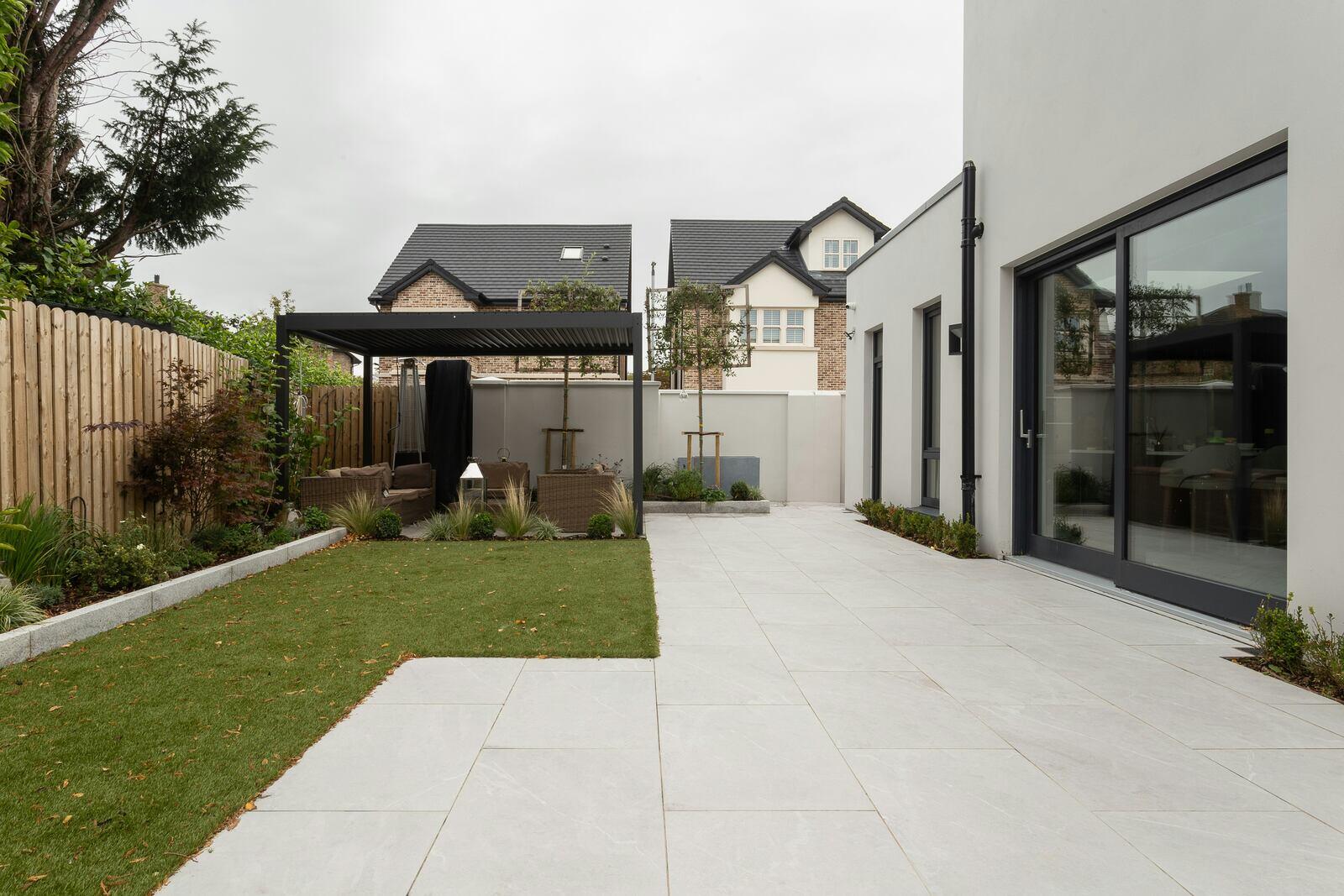
Multifunctional Spaces: Where Beauty Meets Practicality
As modern lifestyles evolve, so do our homes. Multifunctional spaces are a key design trend, blending elegance with practical solutions. The goal is to make spaces work harder while maintaining a clean, intentional look.
Flexible Living Spaces
Who can afford to lose that much square footage to a rarely used formal dining room? This year, we’ll see more flexible spaces that adapt to daily needs. For example, a dining area can double as a workspace with clever furniture choices like built-in benches and extendable tables. Living rooms are getting modular furniture that can shift layouts depending on the occasion, from movie nights to impromptu home office setups. These rooms aren’t cluttered or chaotic. Instead, multifunctionality is approached with elegance.
Home Offices That Work Smarter
The rise of remote work has permanently shifted how we think about home offices. In 2025, the home office is no longer a dedicated, tucked-away room. Instead, folks are seamlessly integrating workspaces into other areas of the home. Think stylish desks built into unused corners, wall-mounted shelves for storage, and decorative partitions that maintain the flow of a space while providing a sense of separation.
Guest rooms can also do double duty. Murphy beds, daybeds, and convertible furniture allow homeowners to maintain beautiful, uncluttered spaces that can quickly transform from offices to guest accommodations.
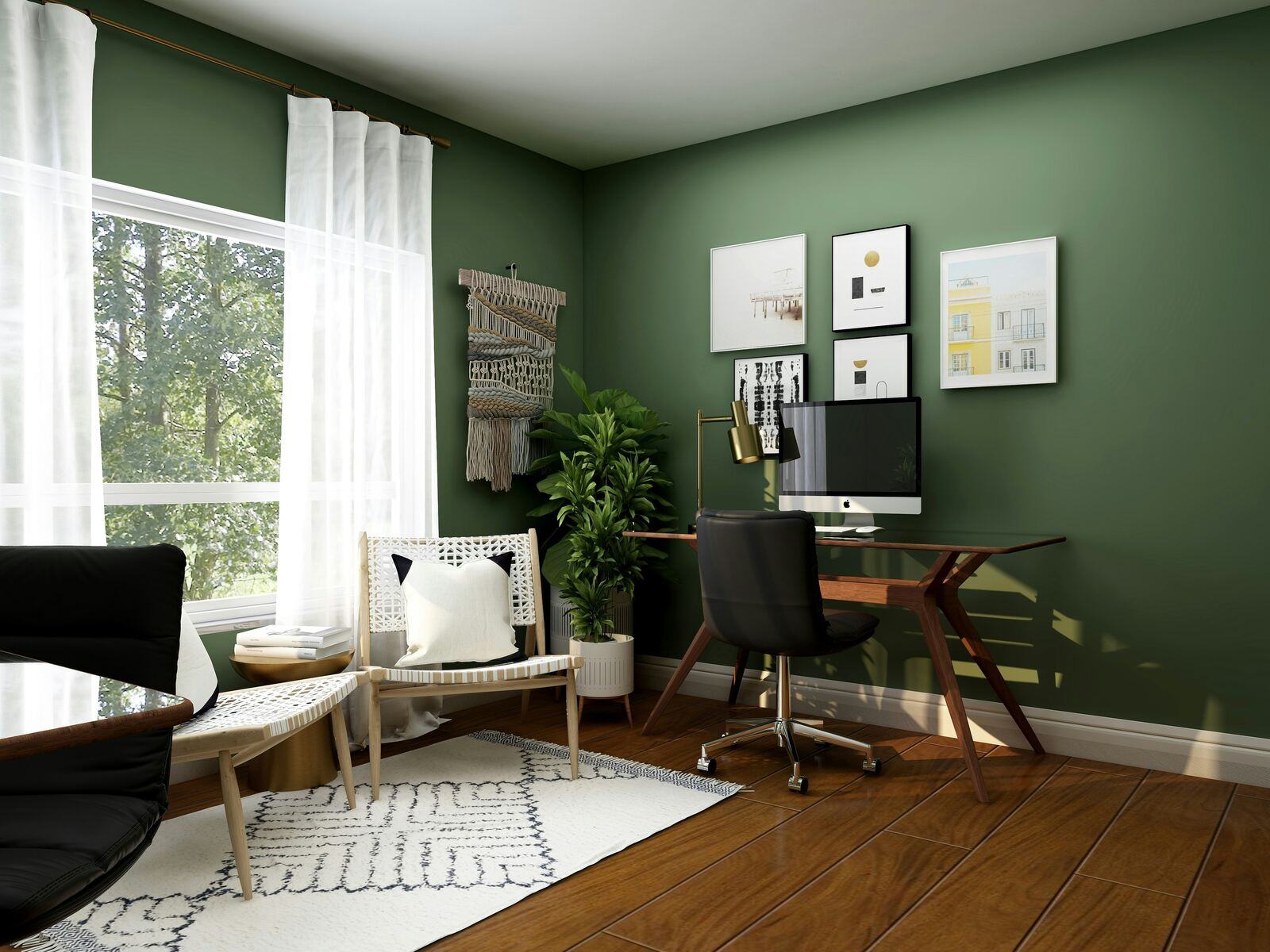
Adaptable Kitchens and Nooks
The kitchen remains the heart of the home, but it is becoming more adaptable. Breakfast nooks now serve as workstations during the day, while kitchen islands increasingly include hidden outlets and smart storage for laptops and tablets.
Multifunctional design is about creating rooms that fit the way people actually live. It ensures spaces feel purposeful without being overwhelmed by too much stuff or too little thought.
Mixed Metals: A Layered Approach to Elegance
Matching metal finishes in a home used to be the standard. Not anymore. In 2025, mixed metals add depth, sophistication, and a touch of the unexpected to modern interior design. Instead of sticking to one finish, designers often combine metals like brass, matte black, polished chrome, and antique bronze to create visually interesting spaces that feel curated rather than coordinated.
How to Mix Metals Effectively
The key to successfully blending metal finishes is balance. Designers often use one dominant metal as the “base” and bring in complementary finishes through smaller accents. Too many different tones can feel chaotic, but a thoughtful mix creates an elegant, layered effect. For example:
- A kitchen might feature matte black cabinet pulls paired with a brushed brass faucet and stainless steel appliances.
- A bathroom could include polished nickel fixtures accented by antique bronze light fixtures.
- In living rooms, more designs combine metal decor elements like black-framed mirrors with brass lighting or iron coffee tables.
What’s Out for 2024? Saying Goodbye to Stale Trends
As 2025 brings in fresh design ideas, some long-running trends are starting to fade. While design is always personal, these styles are losing steam and making way for something warmer, bolder, and more thoughtful.
Overly Minimalist, Cold Interiors
Minimalism isn’t going anywhere, but the cold, stark versions of it are. Homes that once prioritized clean lines and blank spaces are starting to feel sterile and impersonal. In 2025, minimalism is getting a much-needed refresh. Instead of empty rooms, designers are leaning into “warm minimalism,” a style that focuses on fewer high-quality pieces but incorporates texture, color, and personality.
The All-Gray Everything Look
Gray had its moment, but homeowners are ready for something different. The monochromatic gray palette that dominated homes for years is replaced with rich, organic neutrals and nature-inspired colors. Designers are still using gray, but it’s no longer the star of the show. Instead, it works as an accent color alongside earthy browns, greens, and muted blues.
Matchy-Matchy Finishes and Decor
The days of perfectly coordinated everything, matching furniture sets, identical hardware finishes, and overly symmetrical decor are on their way out. Homes are embracing individuality and character. Mixed metals, layered textures, and one-of-a-kind decor pieces create spaces that feel personal and dynamic rather than staged.
Open Shelving Overload
Open shelving took kitchens and living rooms by storm, and while it can look stunning in photos, the reality is often far messier. In 2025, the “every shelf must be open” trend is finally taking a step back. Open shelving works beautifully when curated thoughtfully, but too much of it turns a kitchen into a constant battle against clutter. Homeowners are returning to more practical solutions like cabinets with textured fronts, glass doors, and stylish closed storage.
Shiplap Everything
Shiplap walls exploded in popularity during the farmhouse design craze, and while they still have a place in rustic or coastal homes, they are no longer the go-to design feature. Shiplap has become so overused that it often feels more like a default choice than a thoughtful design element. Homeowners are now looking for wall treatments that feel more fresh and intentional. Wood paneling, reeded detailing, and textured plaster finishes are rising as sophisticated alternatives. Even wallpaper is coming back with modern patterns that add interest without feeling kitschy.
Builder Funnel Understands Digital Marketing for Builders and Remodelers
Staying ahead of design trends isn’t just about style. It's about delivering what homeowners want. If you’re a builder or remodeler looking to showcase your expertise and attract more clients, now is the time to start planning your 2025 marketing strategy. Get on our schedule to talk about how we can deploy our proven tactics to benefit your bottom line.

